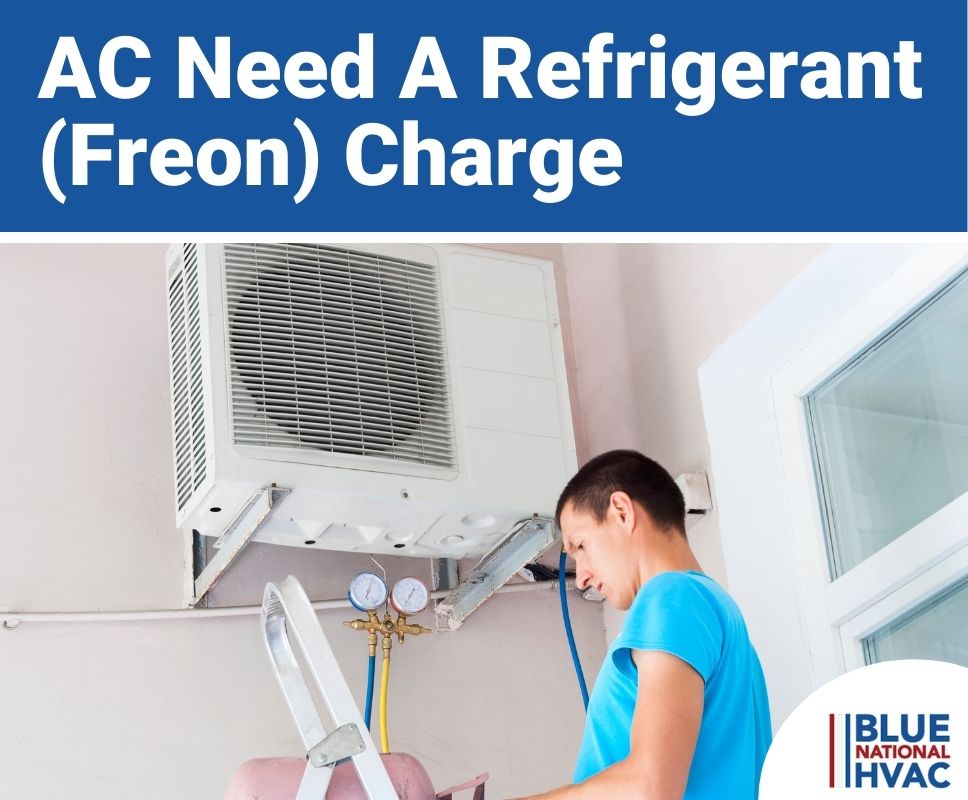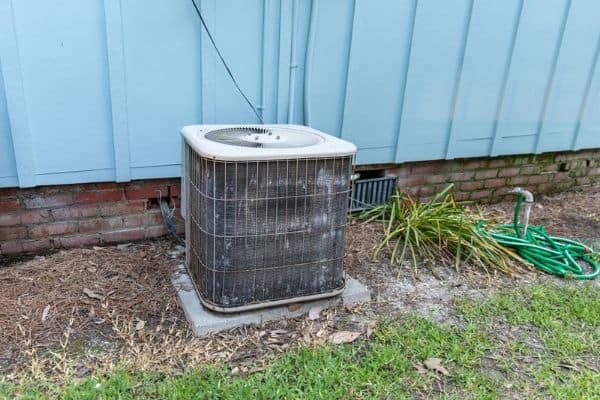What Is SEER?
SEER stands for Seasonal Energy Efficiency Ratio, and it is a specification of most air conditioning systems. It is a ratio of how much cooling an air conditioner provides versus the amount of electricity it uses.
Higher numbered SEER units are more energy-efficient than lower SEER units. For example, a 17 SEER air conditioner is more efficient than a 13 SEER unit and would have more energy savings.
SEER is a standardized measurement for all air conditioners and is a great way to compare systems and estimate their energy costs.
17 SEER Rating Explained
An air conditioning system with a 17 SEER rating means its ratio of total cooling output over the electricity used throughout the whole cooling season is “17”.
The 17 SEER rating is determined mathematically and by long-term testing by the air conditioner manufacturer.
Since central air conditioners with 17 SEER ratings are higher than average, they have to utilize variable speed compressors and blowers to achieve this higher efficiency. These more advanced components reduce cold spots and hot spots in your home.
Lower SEER units generally have single-stage or 2-stage compressors and blowers, which are less efficient.
Is 17 a Good SEER Rating?
A SEER rating of 17 is considered an excellent SEER rating, especially for central air conditioners, air-source heat pumps, and window AC units. They are a popular option amongst homeowners.
For ductless mini-split heat pumps, 17 SEER is considered “average” since these devices can have much higher SEER ratings due to not using ductwork and split design.
Where Can You Find the SEER Rating of an AC System?
An AC system’s SEER rating can be found on the Energy Star Energy Guide tag or sticker. This yellow tag includes all the energy information you’ll need for the air conditioner, including SEER and estimated operating cost.
If you’re browsing for air conditioners online, an air conditioner’s SEER rating will generally be shown in the product’s title, along with the air conditioner size, brand, and model number.
SEER vs. EER Ratings
Along with SEER, you might also find EER ratings while you are browsing different types of AC units. EER is another efficiency rating.
EER is the energy efficiency ratio and is mainly applied to window air conditioners and portable AC units. EER is the AC unit’s energy efficiency at a specific temperature (95°F, 35°C) and only at one time compared to SEER, which is calculated for the entire cooling season.
EER can be converted to SEER using an approximation. The conversion is not an exact science because SEER and EER and found through different means. However, it is an excellent method to compare:
EER = 0.875 X SEER and SEER = EER/0.875
Just like high SEER ratings, high EER rated units are more energy efficient.
Is AC Unit Size Just As Important As SEER Ratings?
If you are looking for a new air conditioner for your home, SEER is definitely important. However, the air conditioner’s size is just as important too.
Air conditioner “size” doesn’t refer to its physical size, but rather its cooling capacity (i.e. the amount of cooling the system can provide to your home).
Larger homes require air conditioners with a larger cooling capacity because there is more space to keep cool.
AC unit size is measured in both tonnage (tons) and British thermal units (BTUs). 12,000 BTUs is equivalent to one ton of cooling capacity.
You can estimate the correct size air conditioner for your home based on its square footage, or you can use a much better approximation with the Manual J calculation. If you need assistance with the Manual J calculation, one of our professional HVAC technicians will be happy to help you calculate it.
What Do You Need To Know About SEER Ratings?
The critical thing to remember about SEER ratings is that lower numbers mean less efficiency, and higher numbers mean greater efficiency. Therefore, AC units with a higher SEER number will use less energy and lower your energy bills.
Additionally, SEER ratings are all about energy efficiency, which is an essential aspect of decreased energy usage to reduce environmental impacts.
History of SEER Ratings
The US government established SEER rating guidance in 1987 when legislation was passed to require a minimum SEER rating in all new air conditioners beginning in 1992.
Since then, the U.S. Department of Energy has made increases to minimum SEER ratings of AC units, starting with the US Energy Policy Act of 2005:
- In 2005, the US minimum SEER was raised to 13
- In 2015, the SEER rating for southern states was raised to 14
- In 2023, the minimum SEER will increase to 14 for northern states and 15 for southern states
Beyond 2023, you can expect even another increase, technology will improve, and energy conservation will only increase.
How to Calculate Energy Usage and Costs of 17 SEER
Finding the energy usage of an air conditioning system with a SEER rating has always been easy. It’s just simple math. However, you need to know a few things about your air conditioner and how often you’ll be using it throughout the year.
Let’s assume you have a 17 SEER air conditioner with the following specification and expected usage per year:
- 24,000 BTU/h
- 115 days per year
- 12 hours per day
- $0.25 per kilowatt-hour (kWh) electricity cost
To determine the annual energy costs of this hypothetical air conditioning systems let’s first find the power used:
24,000 BTU/h 17 SEER = 1,411 watts or 1.411 kilowatts (kW)
Now that we have the kilowatts, we can determine the costs per hour to operate with the local electricity rate:
$0.25 per kWh 1.411 kW =$0.35 per hour
Finally, to find the estimated annual electricity cost of this example air conditioning system, multiply the hourly cost by the days used per year and hours used per day!
115 days 12 hours per day $0.35 = $483.00 per year
There you go, you figured the estimated annual cost of this AC system! You can do this for your specific air conditioner as well. Simply plug in the values that match your system, your cost of electricity, and expected days + hours used per year.
What Are The Different Types of AC Units with 17 SEER?
There are various types of AC units with 17 SEER ratings. You can find the following air conditioning systems with 17 SEER ratings:
- Central air conditioners
- Air-source heat pumps
- Ductless mini-split heat pumps
You might not find a SEER rating on window air conditioners and portable air conditioners, but instead, you will be provided an EER rating.
So, if you recall the 0.875 rule of thumb conversion from earlier in this article, a window AC unit or portable system will need an EER of around 15 to be roughly equivalent to 17 SEER.
When Should You Hire A Pro To Help Pick a 17 SEER Air Conditioner?
If you need further explanation of SEER ratings, EER ratings, or air conditioning sizing, an HVAC professional is the best resource to help you. They can perform Manual J calculations on your home to correctly size an HVAC system and provide SEER rating recommendations.
They can also lay out multiple options showing upfront cost and estimated energy cost per year or throughout the AC system’s expected life.
Our HVAC professionals can provide thorough information and support to help you make the best AC decision for your home.
How Much Do 17 SEER Air Conditioning Systems Cost?
Air conditioning systems’ cost differs depending on their type (i.e., central vs. window), sizing, brand, SEER ratings, and more.
Here are the average costs of 17 SEER central air conditioning systems of different sizes (cooling capacities) to provide an example for easy reference.
- 2.5 ton (30,000 BTU): $1,300
- 3 ton (36,000 BTU): $1,350
- 4 ton (48,000 BTU): $1,600
- 5 ton (60,000 BTU): $2,000
Keep in mind: these prices will vary by HVAC units and other factors.









